Dehumidifiers are devices that are typically placed in living rooms, bedrooms, offices, basements and RV’s to remove excess moisture from the air. High humidity levels can accelerate the growth of various forms of mold as well as dust mites, which can lead to a number of different health problems. It can even damage furniture and clothing. Therefore, it’s important to always keep humidity levels within a normal range, which a dehumidifier can help you do.
However, with so many different models of dehumidifiers out there to choose from, most of you shopping for one probably feel overwhelmed just by the sheer number of options available. And this is where we feel we can help. After extensively analyzing and comparing over 30 different dehumidifiers, we narrowed down the field to just three units which we consider to be the cream of the dehumidifying crop. We based our selection on a number of different factors, including the size and dehumidification capacity of the unit, features, energy efficiency and price. Click here to go straight to our comparison chart.

Best Overall: Frigidaire FFAD7033R1 70-Pint Dehumidifier
The Frigidaire FFAD7033R1 is, in our opinion, the best dehumidifier currently on the market. It is our top pick and we give it our highest recommendation. This powerful dehumidifier can remove up to 70 pints of moisture from the air per day and can be used in rooms as large as 1,400 sq. ft. It also has a large-capacity tank that can hold about 13 pints (approx. 1.6 gallons) of moisture water. When the tank becomes full, it can be conveniently removed from the front of the unit so the water can be dumped out.
The device has an auto shut-off system that will automatically turn itself off when the tank becomes full, so you’ll never have to worry about coming home one day to a drenched floor due of an overfilled water tank. You also have the option of running it continuously by hooking a hose up to the connector in the back of the unit and letting the moisture water run out into a drain.
Additionally, the Frigidaire FFAD7033R1 not only removes excess moisture from your room, it also elminates airborne bacteria and odors as well through the use of an anti-bacterial filter. Moreover, the unit’s caster wheels, top and side handles make it very portable and easy to move and store. It also has fully digital controls/display and is very easy to operate – you simply set it to your desired humidity level and the machine will do the rest. Read reviews on Amazon >

Best Value: Keystone KSTAD50B 50-Pint Dehumidifier
If you’re looking to get the best “bang for your buck,” then the Keystone KSTAD50B is the one you want. This dehumidifier can remove up to 50 pints of moisture per day and is rated to cover a room or space of up to 3000 sq. ft. in size – there are very few dehumidifers advertised to be able to cover rooms that spacious. The unit’s water tank is fairly large as well, being able to hold about 1.3 gallons of water. Having to empty out the tank frequently can be a hassle, so a relatively large tank is definitely a desirable feature in a dehumidifier. However, like the Fridgidaire above, this unit can also be connected to a drain hose for continuous operation if so desired.
The Keystone KSTAD50B has easy-to-use electronic controls and an LED readout, as well as an automatic shut-off feature that will detect when the tank is full and shut itself down. Additionally, it comes with a built-in dust filter that can be easilly removed, cleaned and re-used. Its rolling caster wheels allow you to easilly move the unit from room to room or from one office to another without having to do any lifting.
It’s not quite as effective as the Frigidaire model above at removing moisture (50 vs 70 pints/day) but its smaller compressor/motor size makes it slightly more energy efficient, as it only uses about 500 watts compared to the 700 watts that the Fridgidaire uses. The Keystone KSTAD50B, with a price of just under $170, is also materially less expensive than the Fridgidaire, which is why we think it offers terrific value for money spent. Read reviews on Amazon >

Best Budget Model: Ivation IVADM45 Thermo-Electric Peltier Dehumidifier
For those of you looking for an affordable model for a small room or perhaps an RV, we highly recommend the Ivation IVADM45. It’s fairly cheap at just under $120 (as of the time of this writing), so it’s a great choice if you’re reluctant about dropping a bunch of money on a dehumidifier, especially if you don’t need one of the larger models.
This mid-sized dehumidifier can eliminate up to 25 ounces (approx. 1.6 pints) of moisture a day and has a 4 pint water storage tank. Unlike the two compressor-based models above, the Ivation IVADM45 uses what’s known as thermoelectric peltier technology to remove moisture from the air. The device has no moving mechanical parts other than a small fan. As a result, the unit is extremely quiet and requires practically no energy (it consumes a mere 72 watts of electricity).
Additionally, the Ivation IVADM45’s compact size means you can easily place it in campers, trailers, recreational vehicles and other areas where space is limited. You can even fit it inside a cupboard or a closet. Now we obviously don’t recommend this model if you have a large basement or room with very serious humidity issues that you need to deal with, but for smaller areas and spaces you’ll find this unit to be quite effective. Read reviews on Amazon >
How To Choose The Best Dehumidifier
It’s important that you know what to look for, as the best dehumidifiers have certain qualities and features in common. Also, some aspects may be more important to you than others, depending on what your needs and preferences are. Here is a list of some things you should consider when deciding on which dehumidifier to buy.
Dehumidification Capacity
One of the most important considerations when purchasing a dehumidifier is the volume of moisture it can remove from the air in a given period of time. You’ll find that most dehumidifiers on the market are rated based on how many pints of moisture it can remove in a 24-hour period, and this rating can vary anywhere from 0.5 to 70+ pints/day. If you have a large space or a particularly wet or damp area that you need to “dry” then you’ll want to go with a dehumidifier that is rated at 50 pints/day at a minimum.
Energy Efficiency
Larger, higher-capacity dehumidifiers naturally have bigger motors than their smaller counterparts, which means that they use more electricity as well. Compressor-based dehumidifiers typically use between 300 to 800 watts, depending on their size/capacity, and models that use peltier technology use hardly any electricity. However, it’s important to note that the wattage rating doesn’t tell you the whole story. If you were to measure the total amount of electricity used by a 500-watt dehumidifier vs. a 700-watt model over the course of a week, you’d most likely find that they used about the same amount of energy. The reason is because the larger units’ compressors do not have to cycle on as long as units with smaller compressors to maintain a certain humidity level. So keep that in mind if you’re considering purchasing a smaller unit simply because you think it will save you money, because most likely the savings will be negligible.
Tank Size
Another consideration is the dehumidifier’s storage tank capacity, which can vary in size from 1 to 16+ pints. The advantage of a larger tank is that it will reduce the need to empty it out as frequently. The disadvantage of a large tank, however, is that it adds both size and weight to the unit, making it heavier to lift and overall less portable. And if you don’t like the idea of having to empty out a tank every so often, then make sure to get a model that allows you to attach a hose to the back of the unit so that the water can drain out continuously without the need to periodically empty out a tank.
Price
Most portable dehumidifiers cost between $50 to $250. Miniature-sized models are significantly cheaper than full-sized or medium-sized models, but have no where near the dehumidification capacity as the larger sized models.
Dehumidifier Vs. Air Conditioner: Which One Should You Buy?
Did you know that most portable air conditioners can also be used as dehumidifiers? In fact, not only are they capable of dehumidifying the air, many of them are better at it than dehumidifiers. Portable air conditioners also have an advantage over dehumidifiers in that they don’t require the use of drains, buckets or moisture collection tanks. This is because they evaporate the moisture out through the window vent. Additionally, some AC’s will allow you to operate the dehumidifier and air conditioning functions separately, so you can dehumidify your room without cooling it if so desired and vice versa. This makes air conditioners much more versatile appliances than dehumidifiers. AC’s do require venting to the outside, however, so they are not without their disadvantages. Still, some of you may find an air conditioner to not only be more convenient but more useful as well due to their multi-functionality, so be sure to check out our air conditioner buying guide to determine if they may be a better choice for you.
Comparison Chart
Our Top Pick
70 Pints / Day
13 Pint
4500 Square Feet
Yes
Yes
Yes
47
24 x 15 x 12
$$$$$
Best Value
50 Pints / Day
10 Pint
3000 Square Feet
Yes
Yes
Yes
36
23 x 15 x 11
$$$
Best Budget Model
1.6 Pints / Day
4 Pint
170 Square Feet
No
Yes
No (Peltier Technology)
48
14 x 9 x 7
$$
Best RV Dehumidifier
30 Pints / Day
8 Pint
2000 Square Feet
Yes
Yes
Yes
34
21 x 14 x 11
$$$
Top Rated
70 Pints / Day
10 Pint
4500 Square Feet
Yes
Yes
Yes
40
23 x 16 x 11
$$$$
Top Rated
70 Pints / Day
16 Pint
4500 Square Feet
Yes
Yes
Yes
48
23 x 15 x 12
$$$$$
Very Good
50 Pints / Day
13 Pint
3000 Square Feet
Yes
Yes
Yes
46
24 x 15 x 12
$$$
Best Closet Dehumidifier
Under 1 Pint / Day
1 Pint
107 Square Feet
No
Yes
No (Peltier Technology)
3
15 x 12 x 6
$



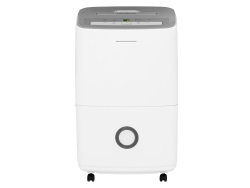
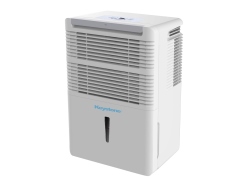
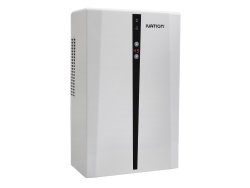
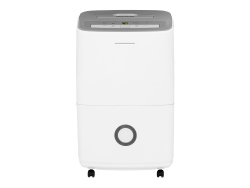
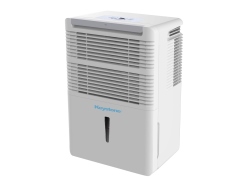


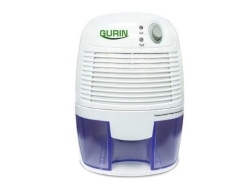
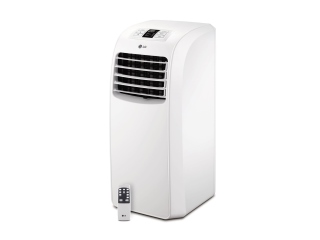 7 Best Air Conditioners
7 Best Air Conditioners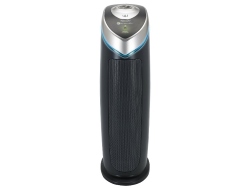 Top 8 Air Purifiers
Top 8 Air Purifiers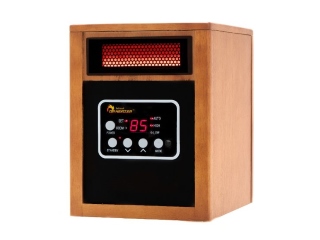 8 Best Space Heaters
8 Best Space Heaters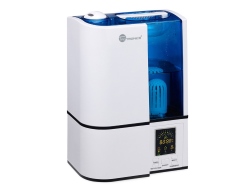 Top 6 Humidifiers
Top 6 Humidifiers